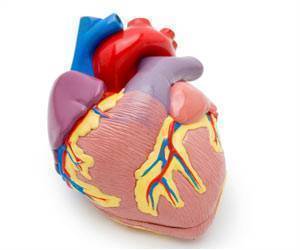Watch out: Smoking too much can boost the risk of peripheral artery disease (PAD), and this elevated risk can persist up to 30 years even after smoking cessation.

‘Watch out: Smoking too much can boost the risk of peripheral artery disease (PAD), and this elevated risk can persist up to 30 years even after smoking cessation.’
Read More..




The study found that compared with never-smokers, those who smoked for more than 40 pack-years had roughly 4 times more risk for peripheral artery disease, versus 2.1 times and 1.8 times more risk for coronary heart disease and stroke, respectively. A pack-year is a parameter of smoking: 10 pack-years can mean 1 pack per day for 10 years or 2 packs per day for 5 years or some other combination.Read More..
Similarly, participants who reported currently smoking more than a pack per day had a relative increased risk--5.4 times more for peripheral artery disease versus 2.4 for coronary heart disease and 1.9 for stroke--compared to those who had never smoked.
The study is the first comprehensive comparison, in a large population moving through time, of the smoking-elevated risks of peripheral artery disease, coronary heart disease, and stroke. The analysis was based on a sample of 13,355 Atherosclerosis Risk in Communities (ARIC) cohort participants, including 3,323 current smokers and 4,185 former smokers, who were tracked for a median period of 26 years.
Peripheral artery disease features the atherosclerotic buildup of cholesterol-laden deposits in arteries serving the legs. The reduction of blood flow leads to limb pain, poor wound healing, and other signs and symptoms. The U.S. Centers for Disease Control and Prevention estimates that about 8.5 million people in the U.S. have peripheral artery disease, including more than 10 percent of people older than 69, though most cases go undiagnosed and there is relatively little public awareness of the disorder.
"Our results underscore the importance of both smoking prevention for nonsmokers and early smoking cessation for smokers. The study also suggests that campaigns about smoking's health risks should emphasize the elevated risk of peripheral artery disease, not just coronary heart disease and stroke," says senior author Kunihiro Matsushita, MD, Ph.D., associate professor in the Department of Epidemiology at the Bloomberg School.
Advertisement
The effect of smoking on peripheral artery disease risk was not just stronger; it was also longer-lasting. Only after 30 years of smoking cessation did the peripheral artery disease risk for former smokers return to the baseline level seen in never-smokers. By comparison, coronary heart disease risk took about 20 years to return to baseline after smoking cessation.
Overall, the results suggest that public health campaigns against smoking should include a reference to the elevated peripheral artery disease risk and should emphasize how long it takes to eliminate that risk.
"Smoking almost always starts in adolescence or early adulthood, and it's very important that young people understand how long the elevated health risk persists even after they've quit," Matsushita says.
The ARIC study is ongoing and may continue for another decade or two. To date, ARIC researchers have published more than 2,000 peer-reviewed papers on the project's findings.
Source-Eurekalert















